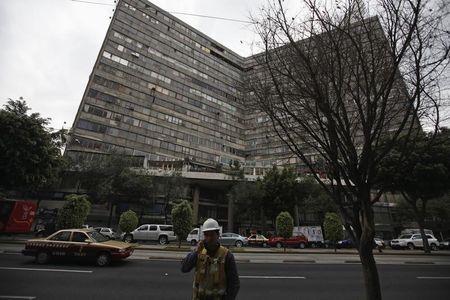laht.com
MADRID – Spain’s Iberdrola said on Monday it signed a contract with
petrochemical company Dynasol to build a 56 MW cogeneration power plant in the
northeastern Mexican state of Tamaulipas.
The cogeneration plant will
cost 1.3 billion pesos ($84 million), Iberdrola said in a
statement.
Cogeneration is a process that simultaneously produces both
electricity and heat from one fuel source, such as natural gas, making use of
heat that would otherwise be lost.
The deal is part of an expansion
strategy in Mexico, where plans call for investing up to 78 billion pesos ($5
billion) in generation projects over the next few years, the Spanish company
said.
Iberdrola, Spain’s largest power company, operates in Britain, the
United States, Mexico and Brazil.
A closer relationship. fotosdigitalesgratis.com
The relationship between Mexican airline Aeroméxico and U.S. carrier Delta Air Lines will be significantly stronger if regulators approve a US $1.5 billion venture between the two.
Aeroméxico CEO Andrés Conesa said passengers will be able to reserve, buy and fly interchangeably between the two airlines under the new agreement. “The potential to combine and align our networks and scheduling will offer our clients a better product than what they’d get individually.”
Talks about a new partnership began in December but the two already have agreements for sharing lounges and check-in counters and swapping frequent-flier points.
The Mexican regulator Cofece signaled in November it would have a positive view for proposals for alliances because benefits for consumers in terms of fares and service have resulted from other such international accords.
However, Cofece chief Alejandra Palacios recognized the potential for detrimental effects on free competition and that its analyses will be detailed.
Conesa said both airlines would be able to operate more efficiently on their Mexico and U.S. routes for the benefit of customers. Mexican travelers should have better access to U.S. destinations, with the same for American travelers going south.
The two could also co-locate in airports and collaborate on marketing and sales.
Delta president Ed Bastian said Mexico is the most popular destination for its customers, who will have more schedule and destination choices.
The two airlines have been codesharing for some time on several routes, they have a maintenance, repair and operations agreement and Delta holds equity in Aeroméxico.
Sources: El Economista (sp), Bloomberg (en)
Aeroméxico CEO Andrés Conesa said passengers will be able to reserve, buy and fly interchangeably between the two airlines under the new agreement. “The potential to combine and align our networks and scheduling will offer our clients a better product than what they’d get individually.”
The Mexican regulator Cofece signaled in November it would have a positive view for proposals for alliances because benefits for consumers in terms of fares and service have resulted from other such international accords.
However, Cofece chief Alejandra Palacios recognized the potential for detrimental effects on free competition and that its analyses will be detailed.
Conesa said both airlines would be able to operate more efficiently on their Mexico and U.S. routes for the benefit of customers. Mexican travelers should have better access to U.S. destinations, with the same for American travelers going south.
The two could also co-locate in airports and collaborate on marketing and sales.
Delta president Ed Bastian said Mexico is the most popular destination for its customers, who will have more schedule and destination choices.
The two airlines have been codesharing for some time on several routes, they have a maintenance, repair and operations agreement and Delta holds equity in Aeroméxico.
Sources: El Economista (sp), Bloomberg (en)










